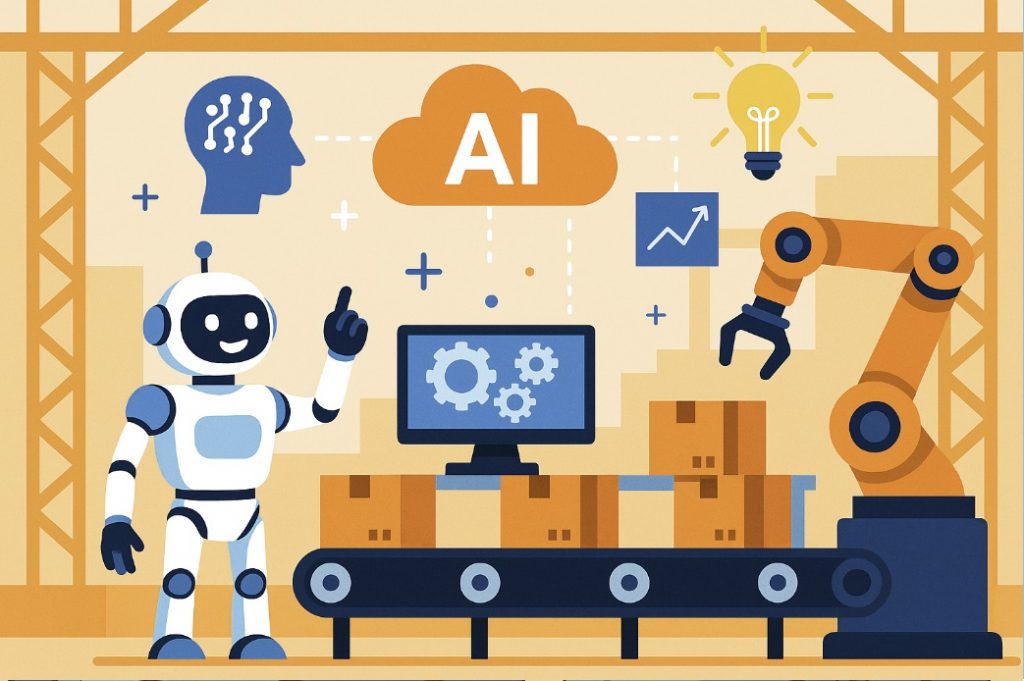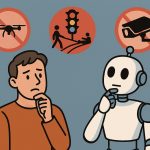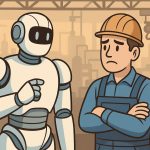In the age of the Fourth Industrial Revolution, artificial intelligence (AI) is transforming traditional factories into smart, adaptive production hubs. Far beyond simple automation, AI brings learning, prediction, and decision-making to industrial environments—reshaping how goods are made, maintained, and delivered. But what exactly does AI do in a factory, and what does the future hold for human labor?
What Is AI-Driven Automation?
AI-driven automation uses algorithms and machine learning systems to manage industrial operations that traditionally required human judgment. Unlike pre-programmed robots that follow fixed routines, AI-enabled systems can analyze real-time data, adjust processes, and even learn from past outcomes to improve future performance.
How AI Is Used in Modern Factories
1. Predictive Maintenance
- Sensors monitor the condition of machines in real time.
- AI analyzes data to predict failures before they happen.
- Reduces downtime and prevents costly breakdowns.
2. Quality Control and Inspection
- Computer vision systems inspect products for defects.
- AI detects flaws invisible to the human eye with greater speed and precision.
- Ensures consistent product quality with fewer recalls.
3. Production Optimization
- AI systems adjust machinery settings and workflows based on data.
- Maximizes efficiency by minimizing waste and energy consumption.
- Can respond dynamically to changes in demand or supply chains.
4. Inventory and Supply Chain Management
- AI forecasts demand, tracks inventory, and automates ordering.
- Reduces overstocking or shortages.
- Enhances just-in-time manufacturing strategies.
5. Collaborative Robotics (Cobots)
- Cobots equipped with AI work safely alongside humans.
- Learn from human interactions and adapt to new tasks.
- Used for assembly, packaging, and repetitive labor.
6. Natural Language Processing (NLP)
- Voice-activated systems help workers control machines hands-free.
- AI can process and respond to human speech for maintenance or logistics.
Benefits of AI in Industrial Automation
- Higher productivity and throughput
- Reduced human error
- Lower operational costs over time
- Real-time decision-making
- Customizable and scalable manufacturing
- Improved worker safety by handling hazardous tasks
Challenges and Concerns
- Job displacement due to automation of routine tasks
- High initial investment in AI infrastructure
- Data security and privacy risks
- Lack of skilled workers to operate and maintain AI systems
- Ethical concerns over worker monitoring and algorithmic bias
Glossary
- Predictive maintenance – _The use of AI and sensors to foresee equipment failure before it occurs.*
- Computer vision – _AI technology that interprets visual data, such as camera images.*
- Just-in-time manufacturing – _A system where materials arrive exactly when needed, reducing waste.*
- Natural Language Processing (NLP) – _The ability of computers to understand and respond to human language.*
Conclusion
Artificial intelligence is not just making factories faster—it’s making them smarter. By merging data with automation, AI enables more responsive, efficient, and sustainable production systems. While the future may reduce the need for manual labor, it will also create demand for new skills and open doors to innovation across industries. The factory of the future is not just automated—it’s intelligent.


